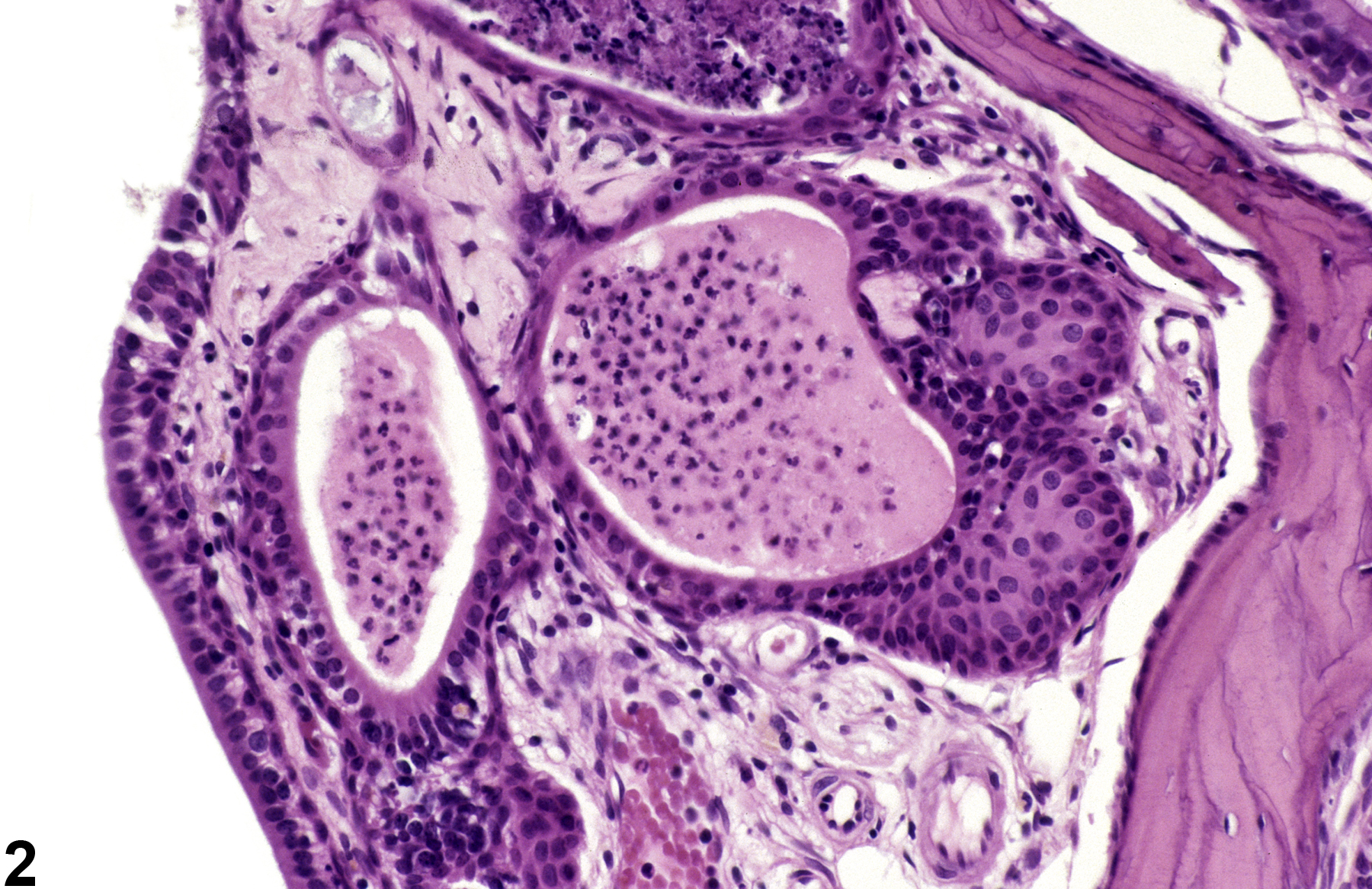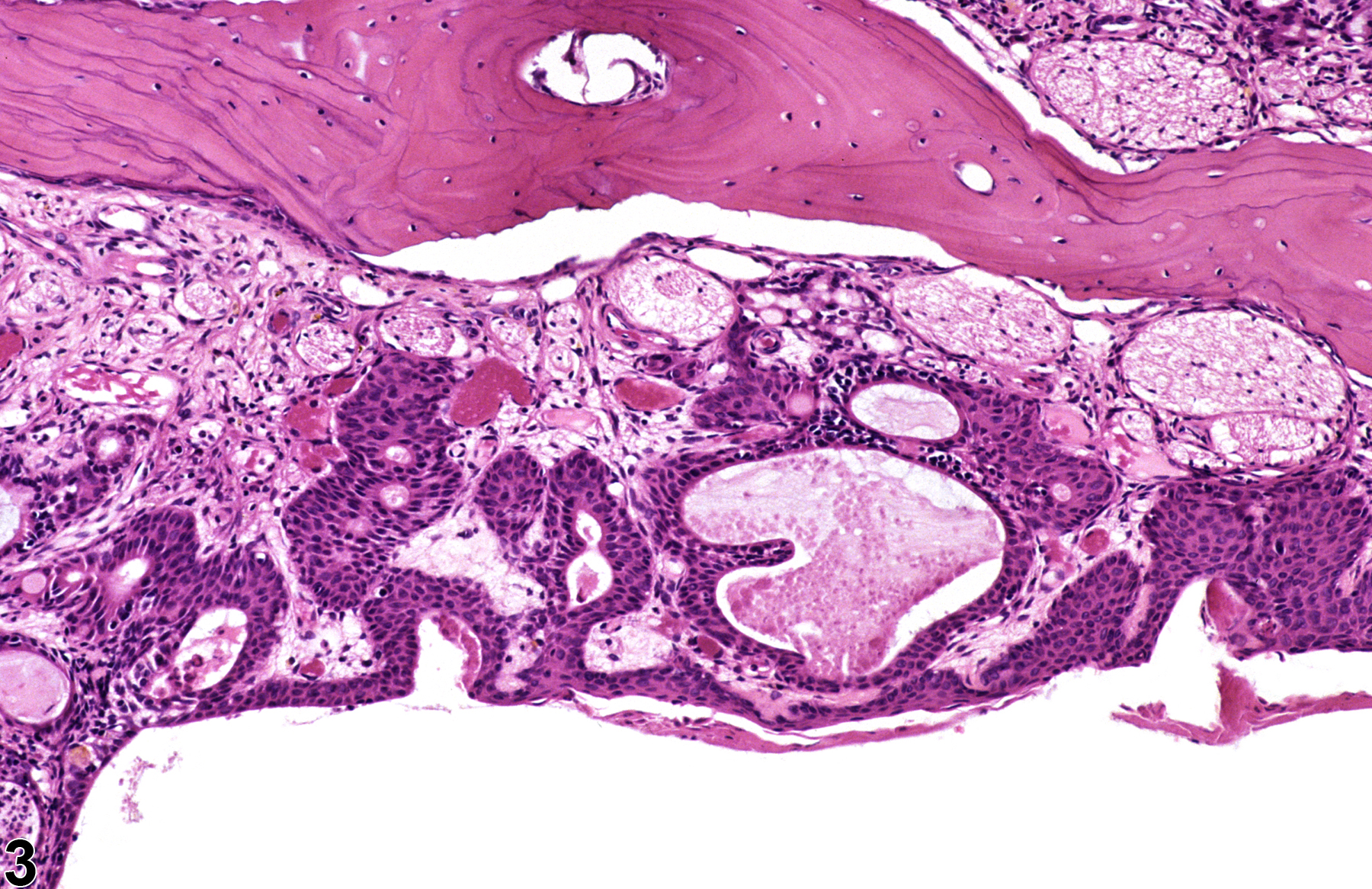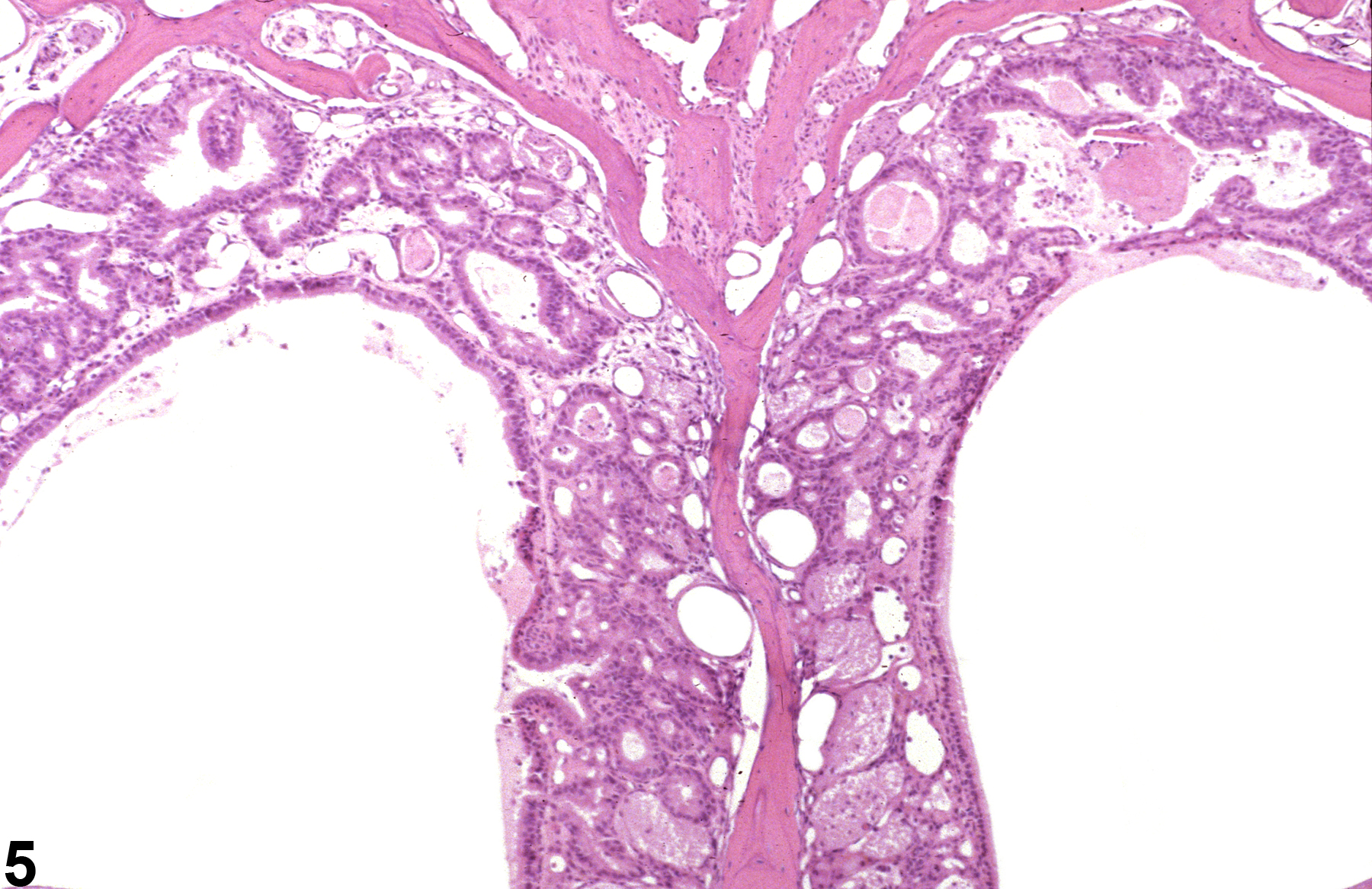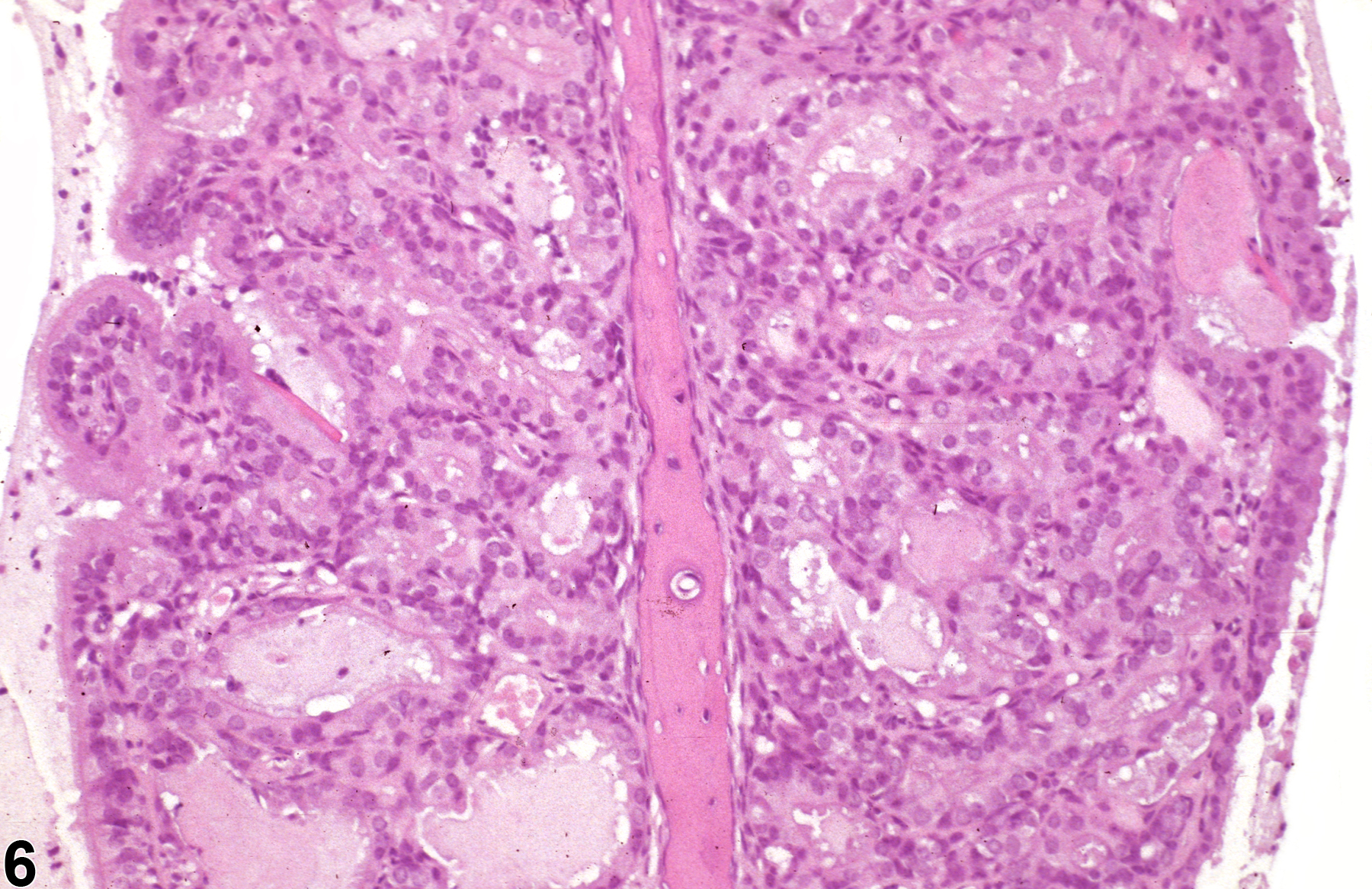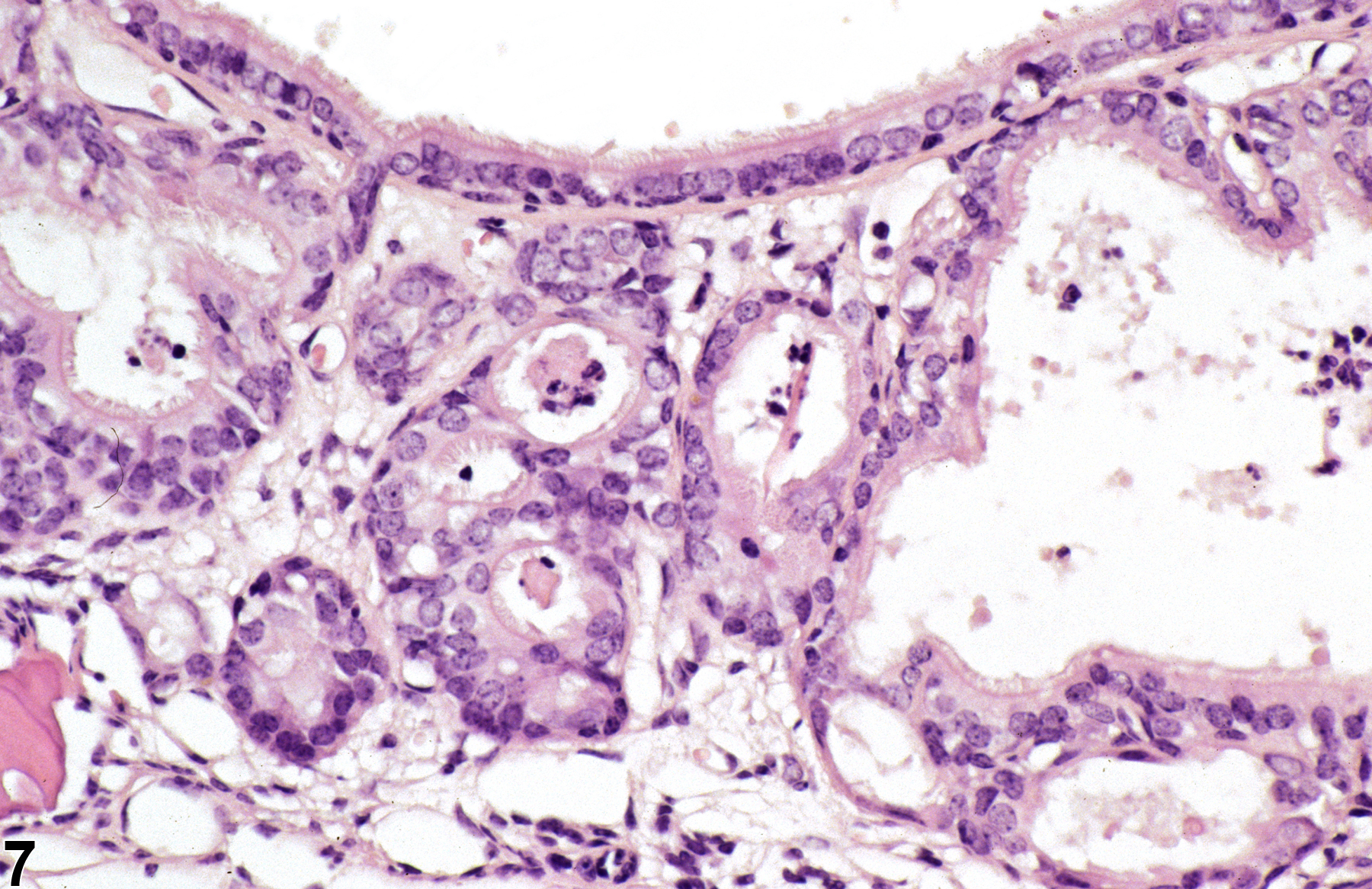Respiratory System
Nose, Olfactory Epithelium, Glands - Metaplasia
Narrative
Comment:
Bowman's gland metaplasia (Figure 1, Figure 2, Figure 3, Figure 4, Figure 5, Figure 6, and Figure 7) is similar to metaplasia of olfactory epithelium (see
and
) but occurs in the epithelium lining the Bowman’s glands. In respiratory metaplasia, the normal Bowman’s gland epithelium is replaced by ciliated respiratory epithelium (there may be variable numbers of goblet cells). In squamous metaplasia, the epithelium is replaced by squamous epithelium. There may be mixed squamous and respiratory metaplasia in some cases, as well as the presence of hyperplasia, dilation, atrophy, and/or inflammation. Diagnoses should be based on the most prominent lesion(s) present.
Recommendations:
"Nose, Olfactory epithelium, Glands - Metaplasia" should be diagnosed whenever it is present in the absence of lesions to the overlying epithelium, when the type of metaplasia differs from that of the overlying epithelium (e.g., squamous in the overlying epithelium and respiratory in the glands), or if it appears to be overly severe or excessive. Otherwise, the metaplasia should be described in the pathology narrative as a component of the metaplasia of the overlying epithelium. The type of metaplastic epithelium present (respiratory or squamous) should be included in the diagnosis as a modifier. Glands associated with the olfactory epithelium are assumed to be Bowman's glands, so it is not necessary to specify "Bowman's" in the diagnosis. It should be assigned a severity grade based on the extent of the lesion.
References:
Long PH, Herbert RA, Peckham JC, Grumbein SL, Shackelford CC, Abdo Kl. 2003. Morphology of nasal lesions in F344/N rats following chronic inhalation exposure to naphthalene vapors. Toxicol Pathol 31:655-664.
Abstract: https://www.ncbi.nlm.nih.gov/pubmed/14585734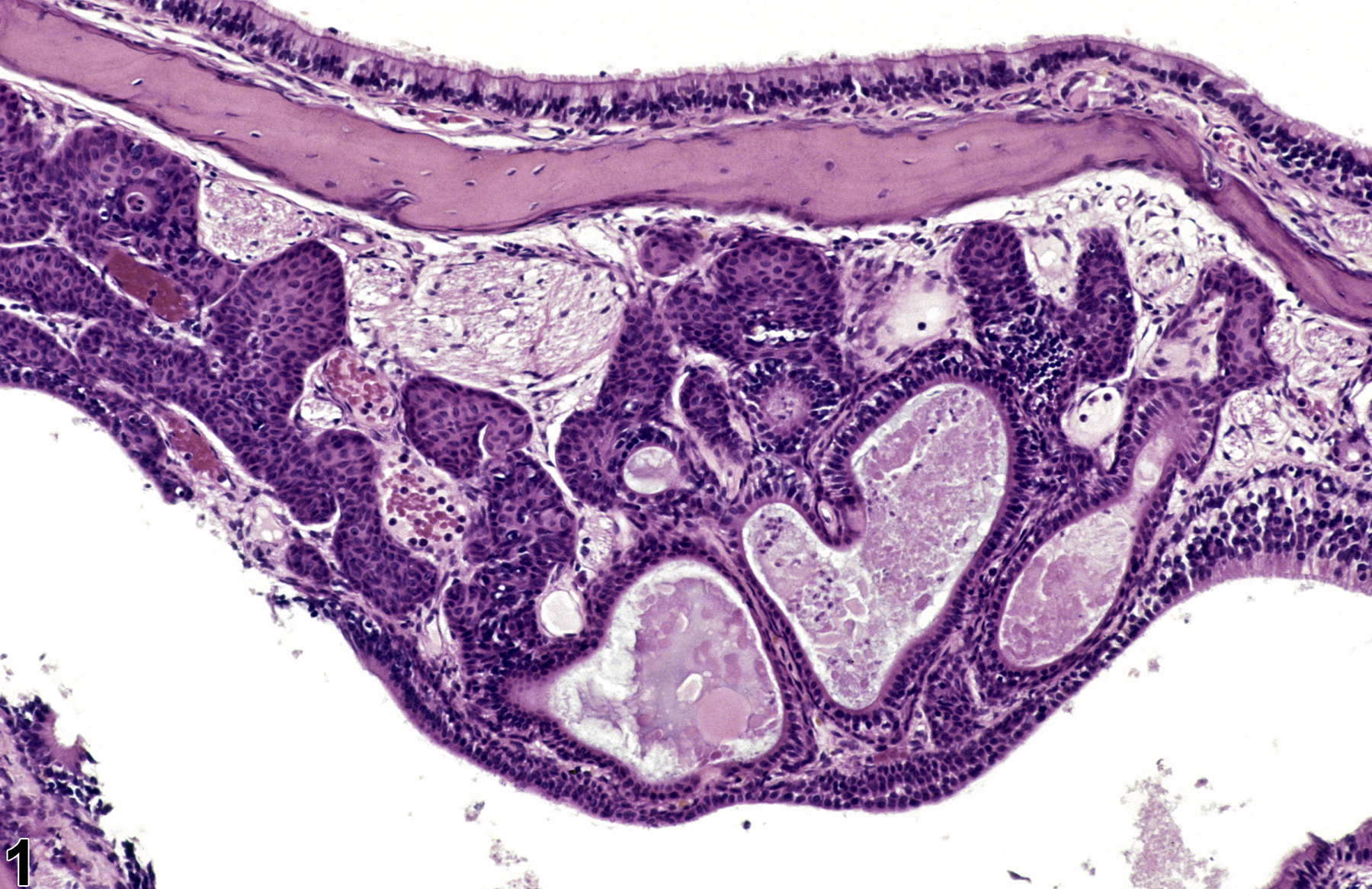 Nose, Olfactory epithelium, Glands - Metaplasia, Squamous in a male F344/N rat from a chronic study. The Bowman's glands are dilated and lined by squamous epithelium.
Nose, Olfactory epithelium, Glands - Metaplasia, Squamous in a male F344/N rat from a chronic study. The Bowman's glands are dilated and lined by squamous epithelium.
All Images
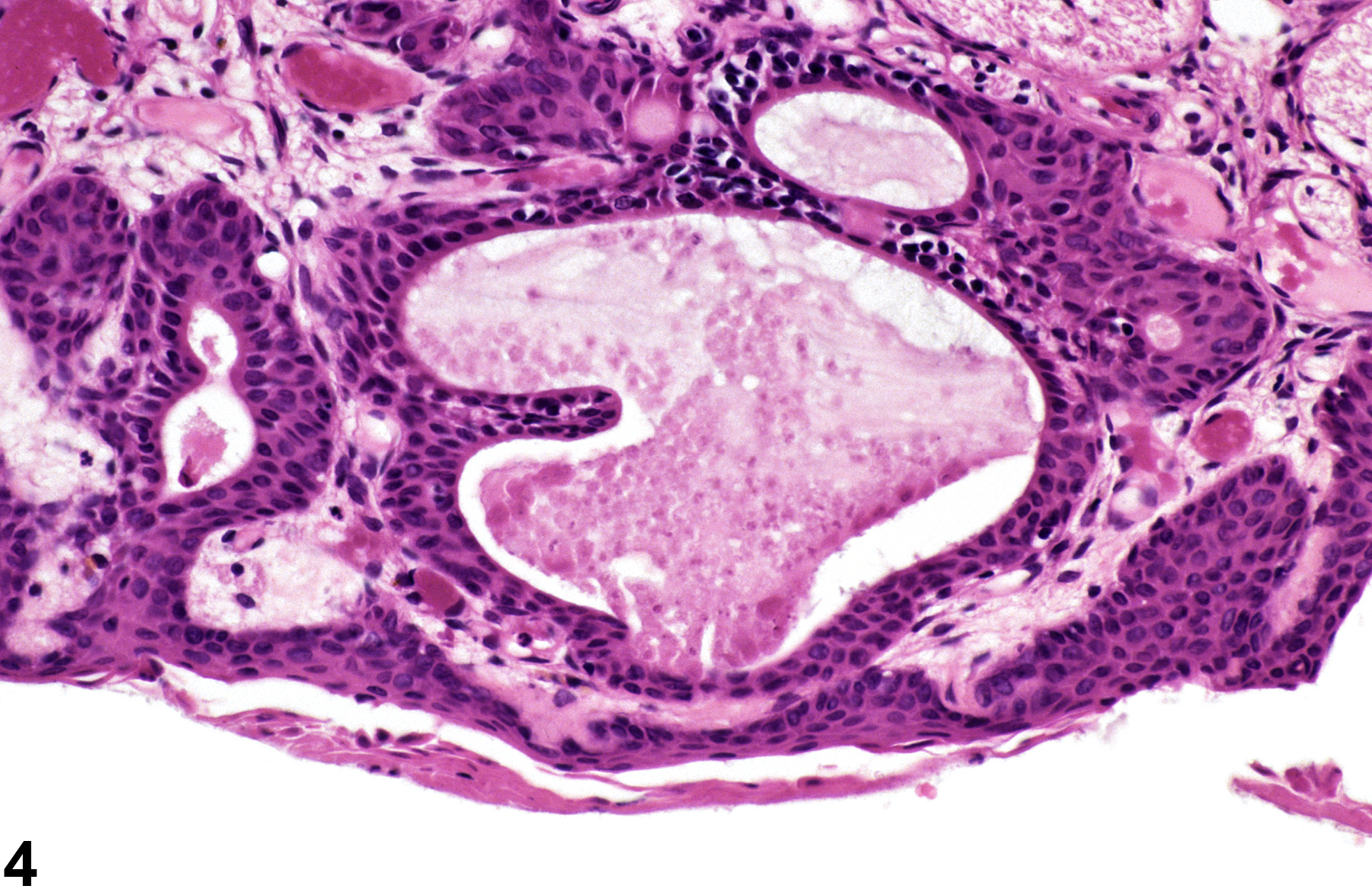
Nose, Olfactory epithelium, Glands - Metaplasia, Squamous in a male F344/N rat from a chronic study (higher magnification of Figure 3). The dilated Bowman's glands are lined by ciliated squamous epithelium and contain proteinaceous material. There is squamous metaplasia of the overlying olfactory epithelium.



